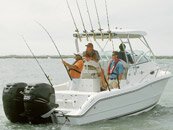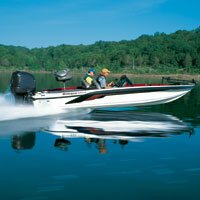Pink Salmon
Oncorhynchus gorbuscha
AKA: Humpie
Distinguishing Markings:
Large hump on the back of mature males. Both males and females have large, oblong or oval spots on both the upper and lower portion of their tail and very small scales. Two dorsal fins including one adipose fin, dark mouth and gums, large oval black spots on tail and back (lake-run mostly silver), 13-17 rays in anal fins.
Size:
3 to 4 pounds average, up to 10 pounds
Distribution:
Endemic to the Pacific and Arctic oceans, Bering and Okhotski seas, the Sea of Japan, and the rivers that flow into these waters. It occurs from Alaska south to the Sacramento River, California, throughout the Aleutian Islands, and northeast into the MacKenzie River, N.W.T., Canada. Introduced to Newfoundland and to the western coast of Lake Superior and is maintaining populations in these locations. Sporadic reports of pink salmon in Labrador, Nova Scotia, and Quebec, and through Lake Superior and tributaries of Lake Huron.
Habitat:
Pinks are anadromous, spending part of their life in fresh water and part in saltwater
Food Preference:
Herring, baitfish, squid
Spawning:
Pink salmon spawning runs begin in the summer. Females hollow out a nest in the gravel of a streambed by lying on one side and beating vigorously with their tails to remove silt and light gravel. The result is a deep trough with a raised rim of gravel at the downstream edge. Once they are fertilized, the eggs are covered. The female guards the nest as long as possible, but dies within a few days or weeks. Depending on water temperatures, eggs hatch from late December to late February, and the young remain in the gravel nest until late April or early May. Once they are mature enough to leave the nest, they journey downstream in large schools. A two-year life cycle is shorter than other salmon species
Fishing Tips:
Trolling with herring or any of the standard salmon offerings will take pinks from salt water, but hot colors tend to work best. The same general rule seems to apply when fishing for pinks in fresh water.
See Also:
- 30 Secret Fishing Tips
- 27 Ways To Tell If You’re A Fishing Fanatic
- When To Fish
- Fighting A Fish
- Codes of Angling Ethics
- Fishing With Kids
- Where Do Fish Live?
- Discover Fishing
- Fishing Tips - Rod Storage
- Fly Fishing Boats
- What’cha Eating? Bait Matrix
- Ten Tips for Clean and Green Boating
- Fishing Accessories - Tips from the Boating Guy
- Boating is Affordable
- Saltwater Fishing Boats: Find a Fishing Boat at DiscoverBoating.com
- Saltwater Fishing Tips: Boating Information for Saltwater Fishing
- Sport Fishing Boats: Find A Fishing Boat
- Big Choices: The basics of big-game fishing equipment
- Saltwater Fishing Boats
- Selecting Your Saltwater Fishing Gear
- Selecting Fishing Tactics Overview

